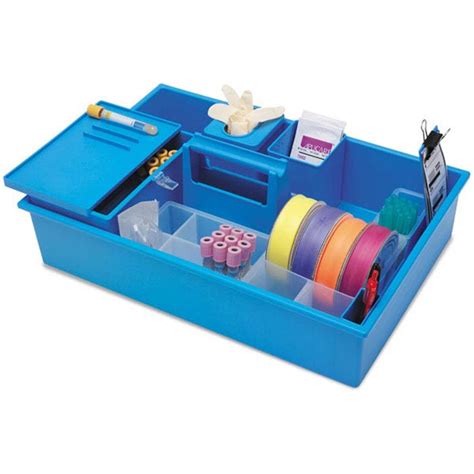Mastering the Role of a Blood Draw Technician: Essential Skills, Certification Tips, and Career Insights
Embarking on a career as a blood draw technician can be a rewarding journey for those passionate about healthcare and patient care. mastering this vital medical role involves developing specific skills, obtaining proper certifications, and understanding the career landscape. Whether you’re just starting out or looking to enhance yoru expertise, this comprehensive guide provides valuable insights into becoming a proficient blood collection technician.
Introduction
Blood draw technicians, also known as phlebotomists, play a crucial role in healthcare by ensuring accurate and safe blood testing procedures. Their work directly impacts diagnosis, treatment plans, and patient outcomes. This article explores the essential skills required for mastering this role, effective certification strategies, practical tips, and insights into advancing your career in medical laboratories and clinics.
Understanding the Role of a Blood Draw Technician
A blood draw technician is responsible for collecting blood samples from patients for laboratory testing. This task requires not only technical proficiency but also excellent patient dialog and adherence to safety protocols. The primary responsibilities include:
- Preparing patients and explaining procedures
- Selecting appropriate collection equipment
- performing venipuncture and capillary puncture techniques
- Maintaining infection control and safety standards
- Documenting collection details accurately
Essential Skills for a blood Draw Technician
Excelling in the role of a blood collection technician demands a blend of technical aptitude and soft skills. Here are key skills every aspiring phlebotomist should develop:
Technical Skills
- Venipuncture proficiency: Mastering the art of inserting needles into veins safely and efficiently.
- Capillary puncture technique: Collecting blood from fingersticks or heel sticks, especially in pediatric or challenging veins.
- Sample handling and processing: Ensuring samples are stored and transported under proper conditions.
- Understanding laboratory requisitions: Correctly interpreting orders and labeling samples.
Interpersonal Skills
- Communication: Clearly explaining procedures and calming nervous patients.
- Empathy and patience: Handling anxious or difficult patients with care.
- Attention to detail: Ensuring accuracy in sample collection and documentation.
Safety and Compliance
- Infection control: Adhering to worldwide precautions to prevent contamination.
- Knowledge of OSHA standards: maintaining workplace safety regulations.
- Proper disposal procedures: Safely discarding sharps and biohazard materials.
Certification Tips for Aspiring Blood Draw Technicians
Certification is a vital step in establishing credibility and advancing your career as a blood draw technician. Here’s how to earn and maintain relevant certifications:
Popular Certification Options
| Certification | Issuing Association | Prerequisites | validity |
|---|---|---|---|
| Certified phlebotomy Technician (CPT) | American Society for Clinical Pathology (ASCP) | High school diploma or equivalent, completed approved training | 3 years, renewal required |
| National Certified Phlebotomy Technician (NCPT) | National Healthcareer association (NHA) | Completion of training and/or work experience | 2 years, renewal required |
| Certified Phlebotomy Technician (CPT) by National Phlebotomy Association (NPA) | NPA | Training and clinical experience | Renew every 2 years |
Certification Tips
- Choose the right certification: Select a credential accredited by reputable organizations like ASCP or NHA.
- Complete accredited training programs: Enroll in training courses that include hands-on practice.
- Gain practical experience: Seek internships or entry-level positions to enhance skills.
- Prepare for certification exams: Use practice tests and study guides focused on test content.
- Maintain certification: Keep up with continuing education and renewal requirements.
Practical Tips for Effective Blood Collection
Aside from formal training and certification, implementing best practices enhances both patient safety and procedural success:
- Proper patient identification: Always verify identity before collecting samples.
- Comfort and reassurance: Use gentle techniques and communicate clearly.
- Optimal site selection: Use the median cubital vein, considering patient comfort and accessibility.
- Equipment readiness: Ensure all supplies are sterile and ready to use before starting.
- Post-procedure care: Apply pressure to prevent hematoma and provide aftercare instructions.
Career Insights and Growth Opportunities
The demand for skilled blood draw technicians is growing in various healthcare settings such as hospitals, laboratories, clinics, and blood banks. Here’s what to consider for your career trajectory:
Salary Expectations
| Experience Level | Average Annual Salary | Additional Benefits |
|---|---|---|
| Entry-Level | $30,000 – $40,000 | Health insurance, paid time off |
| experienced | $40,000 – $50,000 | Career advancement options |
| Specialist/Lead | $50,000+ | Leadership roles, specialized training |
Advancement Opportunities
- Specialize in pediatric or geriatric phlebotomy
- become a senior technician or supervisor
- Pursue roles in laboratory technology or healthcare management
- obtain advanced certifications for broader roles
Benefits of becoming a Blood Draw Technician
- Job stability: Consistent demand across healthcare sectors
- Flexibility: Opportunities for full-time, part-time, or travel positions
- Impactful work: Playing a crucial role in patient diagnosis and care
- Growth prospects: Clear pathways for career advancement
First-Hand Experience and Case Studies
many blood draw technicians find that hands-on practice and real patient interactions considerably enhance their skills. For example, a technician working in a pediatric clinic shared that focusing on gentle techniques and patience improved sample collection success rates and patient satisfaction. Case studies like this highlight the importance of soft skills alongside technical training.
Conclusion
Mastering the role of a blood draw technician involves developing a solid foundation of technical skills, obtaining credible certifications, and continuously honing interpersonal and safety practices. This rewarding healthcare career offers stability,growth opportunities,and the chance to make a meaningful difference in patients’ lives. Whether you’re starting your journey or seeking to elevate your expertise, integrating thes essential skills and tips will empower you to succeed in this vital medical profession. Embrace ongoing learning and practical experience to excel as a blood collection technician and enjoy a fulfilling healthcare career.
